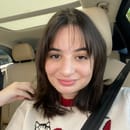If you’re a reader in any capacity, chances are you’ve seen the viral posts on social media that involve book annotation. Colorful tabs sticking out like a sore thumb, pastel highlighter gliding across the page, cryptic notes underneath paragraphs, perhaps a doodled heart next to a quote that make a reader swoon – all telltale features of the trendy pastime so prominently featured on online communities such as BookTok, BookTube and Bookstagram.
From afar, the activity may seem somewhat intimidating, especially to those who have a visceral reaction at the idea of tarnishing the pristineness of their books. However, in my own experience, book annotation is an enjoyable hobby that opens the door to a deeper appreciation of literature. It has allowed me to salvage my passion for reading and finishing books at a greater frequency. Above all else, though, I feel a significant connection and resonance with the material itself. This, to me, is the foremost reward of book annotation, and largely why I encourage all readers to participate in the activity.
Before you embark on this journey, it’s important to clear your mind of any subconscious barriers. My primary piece of advice is to let go of any preconceived notion that your annotations must be perfect or meet a certain standard. The beautiful thing about annotating books is that it reflects your own mind. A quote that may catch your eye could be completely invisible to another reader. This uniqueness will enable you to foster a more profound connection with what you’re reading. As such, you shouldn’t be afraid to annotate books in the way that you see fit.
So how can you get started? Sticky tabs are a popular tool for annotation, and I would highly recommend purchasing them. They are easy to remove and a great way to mark prominent lines in a book. Additionally, highlighters are an absolute must. If you’re interested in underlining or writing within the margins, you should have pens and/or pencils at your disposal. I would also suggest utilizing a notebook to maintain an organized key for your annotations.
There are various ways to approach annotation. Before I begin reading, I research prevalent themes or motifs that will be found in the book. I write these down in a notebook and assign each a colored tab. In terms of highlighting, I mark lines or quotes that align with the themes I am tracking as well as anything that resonates with me in general. Occasionally, I’ll write down any thoughts that the work provokes from me. In “Sharp Objects” by Gillian Flynn, there is a piece of dialogue where a character states, “Adora devours you, and if you don’t let her, it’ll be even worse for you…” For context, Adora is the mother of the protagonist. This line reminded me of the painting “Saturn Devouring His Son”by Francisco Goya (1819-1823), so I wrote the title of the work in the bottom margin. Again, the annotation process is largely dictated by your own personal preferences. You should take the time to customize a method that speaks to your interests and priorities.
Annotating is a gratifying activity that ultimately brings you closer to the intricate world that hides within the pages of a book. It allows you to engage firsthand with the material. As a result, you will retain more information on the plot. Furthermore, if you decide to revisit a book that you annotated, you will quickly be able to find that one specific quote that keeps itching your brain. It’s important to note that creating a guide will make your annotations easier to reference in the future.
Admittedly, one of the main draws of book annotation is the aesthetic element and the vast opportunities for creativity. There are dozens of cute stationery materials out there that are available to be utilized. It is incredibly satisfying and rewarding to see what your finalized book looks like once you finish. If none of the reasons above have convinced you yet, I would recommend picking up the hobby solely to provide a refuge for your creative juices.
I often hear about the phenomenon of how those who were once faithful to reading as a child ultimately lost fervor for the activity as they grew older. What once was a magical pastime somehow morphed into an ugly chore. You may have grown busy over the years, or perhaps it was that one irritating required book for an english class that haunts you to this day. Many people want to rediscover the passion for reading that they held in their youth. Book annotation is the perfect solution to this dilemma. Since it directly engages you and your thoughts with the text, the feeling of boredom will never once cross your mind.
Reading literature opens your mind to a universal human experience that spans decades and encompasses all people on the planet. Subsequently, book annotation aids readers in identifying overall themes that resonate with them in a profound manner. It’s an activity that is first and foremost guided by one’s inner thoughts and experiences. So, if you’re looking to stumble upon a hobby that is equal parts enriching and entertaining – look no further than book annotation.


